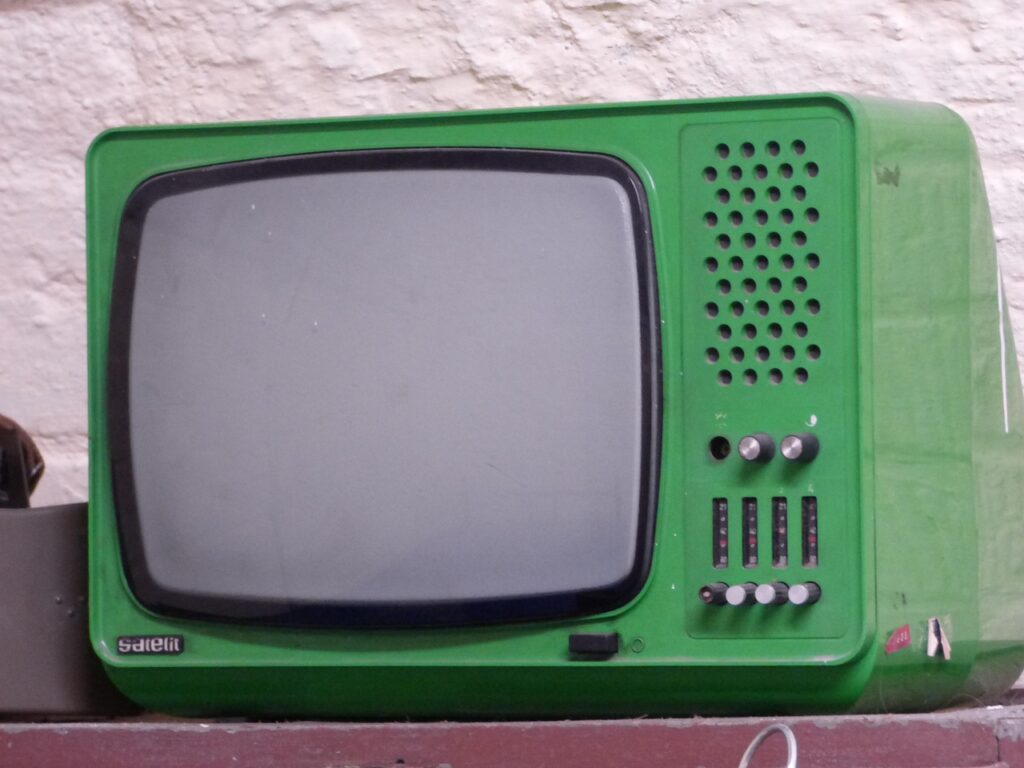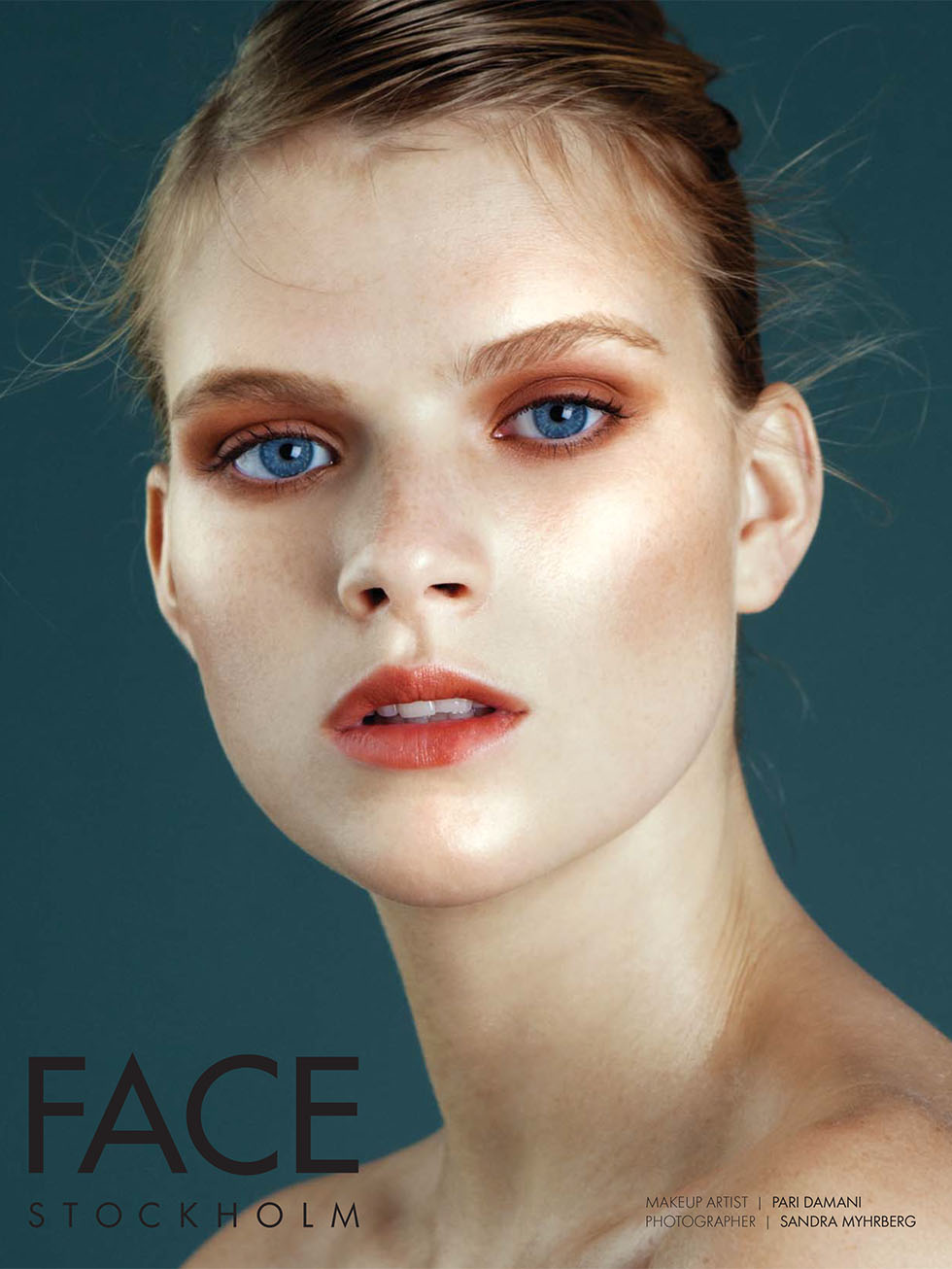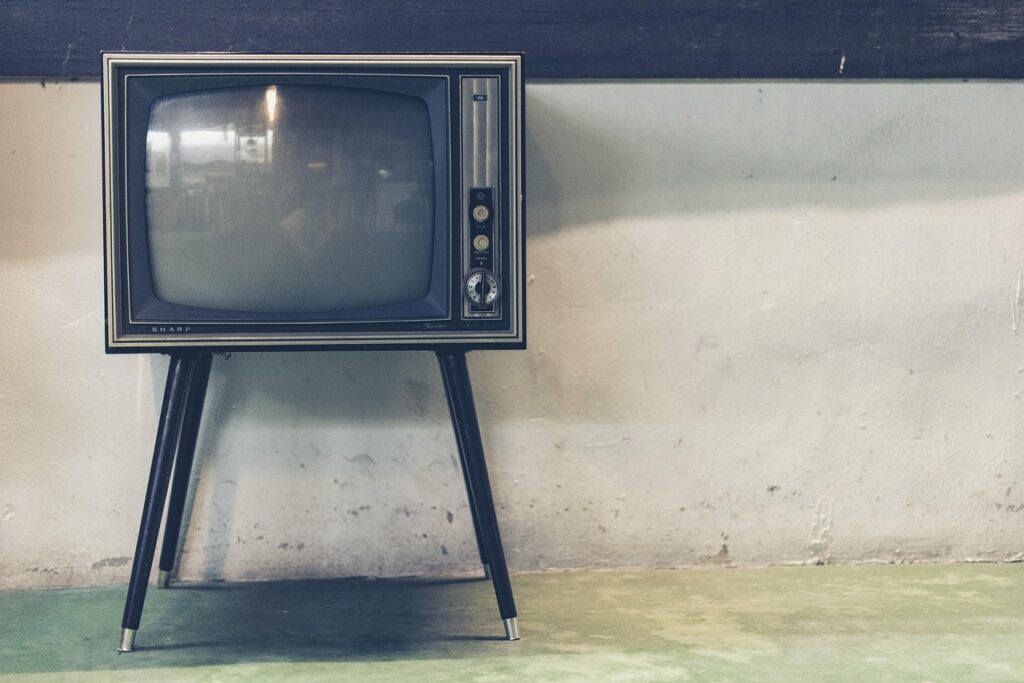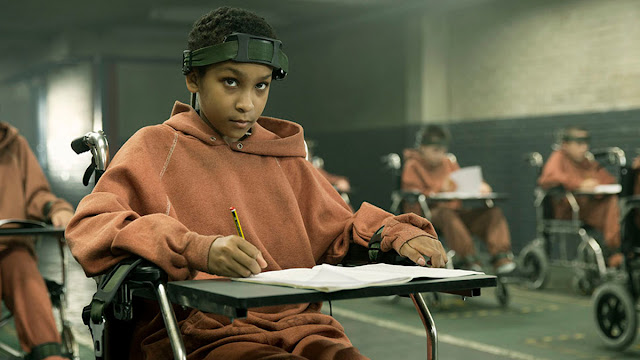
The Sopranos, an American crime drama that graced our screens from 1999 to 2007, wasn’t just another mob show. It was a seismic event in television history, widely hailed as one of the greatest and most influential series ever, even credited with kickstarting what we now lovingly call the Second Golden Age of Television. For six seasons and 86 episodes, David Chase meticulously crafted a narrative tapestry so rich and complex that it continues to resonate, spark debate, and inspire countless rewatches. It dared to peel back the layers of the mobster archetype, revealing not just the brutality, but the banality, the anxieties, and the deeply human — and often hilariously flawed — psyches lurking beneath the tough exteriors.
What made “The Sopranos” so revolutionary wasn’t merely its unflinching portrayal of organized crime in North Jersey, nor its stellar cast of largely unknown actors who would become household names. It was the audacious intellectual ambition behind the spectacle, the subtle yet profound questions it posed about power, identity, family, and the American dream twisted into a nightmare. Every scene, every character interaction, every seemingly mundane detail was imbued with a deeper significance, a secret message that Chase and his team were trying to convey to an audience ready for something more than conventional storytelling.
While many might fixate on the notoriously ambiguous finale, the true genius of “The Sopranos” lies in the consistent thread of these underlying truths woven throughout its entire run. These aren’t just plot points; they’re philosophical declarations, psychological dissections, and cultural commentaries that redefine our understanding of the mobster narrative. So, let’s dive deep into some of the most profound revelations the show was secretly trying to tell us, starting with how it utterly dismantled the romanticized image of life in organized crime.
1. **The Unsentimental Reality of Mob Life**For decades, popular culture had fed us a specific image of the gangster: a figure of dangerous charisma, bound by honor, constantly embroiled in dramatic shootouts and grand schemes. “The Sopranos” fundamentally challenged this ingrained mythology, pulling back the curtain to reveal a world far more prosaic, yet no less perilous. David Chase himself articulated this vision, stating, “I want to tell the story about the reality of being a mobster—or what I perceive to be the reality of life in organized crime. They aren’t shooting each other every day. They sit around eating baked ziti and betting and figuring out who owes who money. Occasionally, violence breaks out—more often than it does in the banking world, perhaps.” This quote perfectly encapsulates the show’s intent to strip away the cinematic glamour and expose the tedious, bureaucratic, and often petty realities of running a criminal enterprise.
This isn’t to say “The Sopranos” lacked violence; it certainly didn’t. But the violence, when it did erupt, was often shocking in its suddenness, its brutality, and its lack of cinematic grandeur. It wasn’t stylized; it was visceral, messy, and had immediate, devastating consequences for characters we had grown to know, for better or worse. This approach grounded the series in a gritty realism that set it apart, forcing viewers to confront the human cost of these “business decisions” rather than simply reveling in the spectacle.
The show masterfully depicted the day-to-day grind that involved far more mundane tasks than dramatic heists. We saw Tony and his crew navigating family squabbles, dealing with financial woes, managing legitimate (and not-so-legitimate) businesses, and engaging in endless conversations over coffee and ziti. This constant juxtaposition of the ordinary with the extraordinary underscored the core message: these are men with families, anxieties, and responsibilities, just like anyone else, except their “business” involves a level of ethical compromise and potential violence that most people can only imagine. The show’s brilliance lay in making this “reality” compelling, proving that character and psychological depth could be far more engaging than perpetual action sequences.
This nuanced portrayal extended to the power dynamics within the DiMeo crime family itself. We witnessed internal squabbles over perceived slights, betrayals born of ambition, and the constant maneuvering for position, often driven by ego as much as financial gain. The traditional mob traditions regarding seniority, as seen with Uncle Junior’s chronic frustration at being leapfrogged, revealed a rigid hierarchy that bred resentment and internal conflict. It was a corporate structure, albeit one where “termination” could mean something far more permanent than a pink slip, showcasing the unromantic truth that even within organized crime, the primary motivators were often power, money, and deeply ingrained personal insecurities.

2. **The Psychological Burden of Power**At the very heart of “The Sopranos” lies the groundbreaking exploration of its protagonist, Tony Soprano, as a man buckling under the immense psychological weight of his position. Unlike the unflappable, stoic crime bosses of yesteryear, Tony Soprano is introduced to us not as an impervious patriarch, but as a man suffering from panic attacks. This central premise—a mobster reluctantly beginning therapy sessions with psychiatrist Dr. Jennifer Melfi after a particularly bad fainting spell—immediately signals the show’s intent to delve deep into the internal landscape of a man burdened by unparalleled responsibilities.
Tony’s journey through therapy reveals a complex individual prone to bouts of clinical depression and reflex syncope, conditions rarely associated with the archetypal tough guy. His sessions with Dr. Melfi become the crucible where his internal conflicts are laid bare: the struggle to balance the demands of his Mafia family with those of his biological wife and children. This dynamic offered viewers an unprecedented look at the emotional toll of leading a crime syndicate, demonstrating that the boss’s chair, while affording immense power, was also a seat of immense stress, anxiety, and moral quandaries. The show made it clear that even the most formidable figures are not immune to the crushing weight of their choices and circumstances.
The series consistently illustrated how Tony’s career as the boss of the DiMeo crime family led to “frequent rage and anxiety,” pushing him into “dangerous and even life-threatening scenarios.” These external pressures, coupled with his internal demons, fueled his need for professional help. Dr. Melfi’s office became his only sanctuary, a place where he could “slowly begin to open up about his emotional problems” without fear of betraying weakness to his associates or family. This vulnerability, so uncharacteristic of a mob boss, was one of the show’s most revolutionary elements, asserting that power does not equate to peace of mind, but often amplifies psychological distress.
Tony’s struggles weren’t just about managing his “business” and his domestic life; they were deeply rooted in his own identity and past. His “overbearing mom” and the “responsibilities that go along with” inheriting his father’s business are highlighted by Chris Albrecht, president of HBO Original Programming, as key elements of Tony’s mid-life crisis. The show brilliantly used Tony’s therapy sessions to unearth these foundational traumas and understand how they manifested in his adult life, from his short temper to his serial womanizing, and even his complex relationship with his children. This portrayal fundamentally redefined the gangster, presenting him as a product of his environment and his unresolved psychological conflicts, rather than a monolithic figure of pure evil.
Read more about: Decoding the Danger: 9 Alarming Health Effects of Energy Drinks You Can’t Afford to Ignore

3. **The Intertwined Nature of Family and ‘Family’**”The Sopranos” masterfully illustrates that for Tony, and indeed for many of his associates, there is no clear boundary between his biological family and his criminal “family.” These two worlds are not just co-existing; they are inextricably linked, constantly influencing and contaminating each other, creating an unending source of conflict and moral dilemma. The series follows Tony’s struggle to “balance his family life with his role as the boss of the DiMeo crime family,” a premise that underpins nearly every major storyline. This isn’t just about managing two separate spheres; it’s about navigating a single, complex ecosystem where the rules of one often brutally clash with the expectations of the other.
This intricate web is most evident in Tony’s relationships with his closest relatives who are also entrenched in the crime world. His “crafty paternal uncle Corrado ‘Junior’ Soprano,” for instance, is not just a relative but a rival for power, whose actions directly impact Tony’s life, both personally and professionally. Similarly, his “immature and hot-headed cousin and protégé Christopher Moltisanti” is a constant source of frustration and loyalty, with his insubordination and substance abuse creating problems that spill over from the criminal enterprise into Tony’s emotional well-being. These characters, being “fixtures in Tony’s real family, as well as his crime family,” ensure that their “actions in one realm often create further conflicts in the other.”
The impact on Tony’s immediate family is equally profound. His wife, Carmela, publicly denies the existence of Tony’s criminal business while simultaneously benefiting from the “affluent lifestyle and higher social status it brings her.” This hypocrisy is a central tenet of her character, illustrating the moral compromises necessitated by being intertwined with the mob. Their children, Meadow and A.J., also grapple with the “eventual knowledge of their father’s criminal activities and reputation,” complicating their teenage issues and forcing them to confront the darker side of their family’s wealth and status. The show relentlessly demonstrates how the “family business” casts a long, inescapable shadow over every aspect of their lives, corrupting innocence and distorting relationships.
Moreover, the show frequently blurs the lines through its character descriptions. Figures like Paulie “Walnuts” Gualtieri and Salvatore “Big Pussy” Bonpensiero are not just soldiers in Tony’s crew; they are veterans who “have worked with Tony and his father,” suggesting a familial, generational loyalty that transcends mere professional association. Even the “friends of the Soprano family” like Artie and Charmaine Bucco, who try to maintain a law-abiding life, find themselves constantly drawn into Tony’s orbit, their marriage suffering “greatly” as Charmaine resents Artie’s desire to cater to Tony. This constant pull highlights the pervasive nature of the “family” and its inescapable influence on everyone connected to it, underscoring that in this world, blood ties and crime ties are often one and the same.
Read more about: 15 Revelations About Stars That Shaped Our Understanding of the Cosmos
4. **The Destructive Grip of the Matriarch**A truly profound and unsettling revelation of “The Sopranos” lies in its brutal, unflinching portrayal of the matriarch’s power, specifically through Tony’s “narcissistic and manipulative mother, Livia.” David Chase openly admitted that “the tumultuous relationship between series protagonist Tony Soprano and his mother Livia is partially based on Chase’s relationship with his own mother.” This personal genesis infuses the character with an authenticity that is both chilling and deeply analytical, revealing how unresolved maternal relationships can fester and profoundly impact a man’s entire life, including his criminal empire. Livia is not merely an annoying old woman; she is a malevolent force, a psychological albatross around Tony’s neck.
Livia’s “scheming, treacherous, shrewd manipulations” are a constant source of Tony’s anguish, arguably more so than any rival mob boss. Her passive-aggressive tactics, her refusal to acknowledge any positive aspect of Tony’s life, and her deep-seated bitterness are psychological weapons that cut deeper than any physical threat. The first season dramatically illustrates this when Livia, after talking to Junior, “subtle[ly] manipulati[es]” him into ordering an attempt on Tony’s life. This betrayal from his own mother is a pivotal moment, exposing the depth of her malevolence and the emotional damage she inflicts. It’s a stark counter-narrative to the idea of the protective Italian-American mother, presenting instead a figure whose love is poisoned by resentment and self-pity.
The show uses Livia to explore themes of generational trauma and the origins of Tony’s own psychological issues. Her negativity and constant undermining not only shape Tony’s character but also echo in his own parenting style and his struggles with his children. Her ability to subtly turn others against Tony, as she does with Junior, demonstrates a form of psychological warfare that is far more insidious and difficult to combat than overt aggression. Her “possibly psychopathic” tendencies, as described in the season one summary, reveal the hidden darkness within the domestic sphere, shattering any illusions of home as a pure sanctuary from the dangers of the outside world.
Even after her death, which occurs in season three, Livia’s presence continues to haunt Tony, signifying the enduring grip of this destructive matriarchal force. His “complicated feelings surrounding their relationship” after her death highlight that some wounds never truly heal, and some influences are too profound to simply disappear. “The Sopranos” expertly deconstructs the idealized mother figure, presenting instead a complex, often terrifying, portrait of a woman whose emotional dysfunction becomes a foundational element of her son’s identity and struggles, demonstrating that the most dangerous battles are often fought within the confines of one’s own family history.
Read more about: Beyond the Pages: 15 Jaw-Dropping Reasons Why Toni Morrison’s ‘Beloved’ Still Shakes the Literary World (and Our Hearts!)

5. **Therapy as a Confessional and a Battleground**One of the most radical departures “The Sopranos” took from traditional crime dramas was making psychotherapy a central narrative device. Tony Soprano’s “reluctan[ce to] begin[s] seeing psychiatrist Dr. Jennifer Melfi” after suffering panic attacks is the catalyst for the entire series. This innovative premise immediately establishes therapy not just as a plot point, but as a critical lens through which the audience gains unparalleled access to the protagonist’s inner world, transforming the traditional mobster into a figure of complex psychological depth. Dr. Melfi’s office thus becomes both a confessional booth and, in its own unique way, a subtle battleground of wills and intellect.
Dr. Melfi herself is portrayed as “thoughtful, rational, and humane,” a stark contrast to Tony’s violent and impulsive personality. Her role is to “encourage him to open up about his difficulties balancing his family life with his criminal life,” a task fraught with danger and ethical dilemmas. She is drawn to the “challenge of helping such an unusual client,” initially “naively assum[ing] that their doctor–patient relationship will not affect her personal life.” The sessions become a fascinating exploration of transference and counter-transference, where Tony divulges his attractions to her, and Melfi harbors “some degree of attraction to Tony too,” though she “rarely admits it and never acts on it.” This tension elevates their dynamic beyond mere therapy, making it a compelling character relationship in its own right.
The therapeutic process itself is depicted with remarkable nuance, showcasing Tony’s resistance, his manipulative tendencies, his flashes of insight, and his inevitable regressions. The sessions allow the show to delve into the roots of his behavior, connecting his present-day anxieties and violence to childhood traumas, particularly his relationship with his mother Livia. Dr. Melfi acts as the audience’s surrogate, attempting to make sense of Tony’s often contradictory actions and moral failings, while also wrestling with her own professional boundaries and personal safety. The irony of a hardened mob boss seeking emotional vulnerability from a psychiatrist is a constant, rich source of dramatic tension and dark humor.
Beyond the personal insights, the therapy sessions serve as a meta-commentary on the nature of understanding and empathy. Dr. Melfi struggles “with the fallout of the assault” she experiences in season three, and the profound “notion that she could ask Tony to deal out his brand of justice,” ultimately deciding against it. This internal conflict highlights the ethical tightrope she walks, constantly battling the allure of Tony’s power and the moral compromises it represents. The therapy room, therefore, is not just a place for healing but a stage where the show openly interrogates morality, human nature, and the limits of professional detachment when confronted with genuine evil, making it one of the most innovative and enduring elements of “The Sopranos.”
Continuing our deep dive into the profound layers of *The Sopranos*, it’s clear that David Chase and his unparalleled team weren’t just crafting compelling characters or intricate plotlines. They were meticulously building a cultural touchstone, a work of art that reshaped television and left an indelible mark on the American psyche. The deeper messages woven throughout the series extend beyond Tony’s personal struggles to encompass the show’s broader impact, its groundbreaking technical artistry, its evocative sense of place, and the sheer brilliance of its ensemble.
6. **The Unprecedented Cultural Impact and Enduring Legacy***The Sopranos* didn’t just grace our screens; it redefined them, earning its place as “one of the greatest and most influential television series of all time.” It is widely “credited with kickstarting the Second Golden Age of Television,” a testament to its audacious storytelling and sophisticated character development. From its initial broadcast, the series was not merely consumed but rigorously analyzed, sparking “critical analysis, controversy, and parody” that continued long after its finale. This wasn’t just entertainment; it was a cultural phenomenon.
The show’s critical acclaim translated into an impressive array of accolades, firmly cementing its status as a television landmark. It garnered “Peabody Awards for its first two seasons,” a rare achievement that highlighted its immediate impact and quality. Beyond that, *The Sopranos* amassed “21 Primetime Emmy Awards, and 5 Golden Globe Awards,” validating its groundbreaking performances, writing, and direction across its entire run. These honors weren’t just trophies; they were public acknowledgments of a paradigm shift in dramatic television.
The ripples of *The Sopranos*’ influence stretched far beyond the awards circuit, manifesting in a vibrant and enduring legacy that continues to resonate today. The series “has spawned books, a video game, soundtrack albums, podcasts, and merchandise,” creating an expansive universe for fans to explore. Moreover, the 2021 prequel film, *The Many Saints of Newark*, demonstrated the sustained appetite for its universe, proving that the world and characters Chase created possess a magnetic pull that continues to captivate audiences, long after the final cut to black.
What *The Sopranos* ultimately revealed was the immense potential of television as an art form capable of delivering profound, sustained commentary on the human condition and the American experience. Its legacy isn’t just in the narratives it told, but in the doors it opened for complex, morally ambiguous, and deeply intelligent storytelling on the small screen, proving that television could be every bit as impactful and revered as feature film. It truly stands as an enduring commentary, perpetually inviting deeper interpretation.
Read more about: Beyond the Lens: 8 Iconic Portraits That Ignited Global Conversations
7. **Crafting a Cinematic Universe: Innovative Production and Direction**The unparalleled quality of *The Sopranos* wasn’t accidental; it was the direct result of David Chase’s singular vision and relentless dedication. As the series creator, showrunner, and executive producer, Chase was “deeply involved with the general production of every episode” across all six seasons. He was renowned for being a “very controlling, demanding, and specific producer,” ensuring that every aspect of the show, from the script to the final edit, met his exacting standards and contributed to the overarching narrative and thematic goals.
This meticulous approach extended to every facet of production, particularly in achieving the show’s distinctive visual style. Chase would “oversee all the editing, consult with episode directors, give actors character motivation, approve casting choices and set designs,” and even perform “extensive but uncredited rewrites of episodes written by others.” This level of hands-on involvement ensured a cohesive and high-quality product, especially evident in the show’s “feature film quality” photography and directing, a standard-bearer for television at the time.
The cinematic aesthetic was a deliberate choice, fostered through close collaboration between Chase and his cinematographers, notably Alik Sakharov and Phil Abraham. Sakharov recalled their method: “From the pilot, we would sit down with the whole script and break the scenes down into shots. That’s what you do with feature films.” This detail-oriented, film-centric planning, combined with a talented stable of directors including Tim Van Patten, John Patterson, Allen Coulter, and Alan Taylor, consistently delivered a visual richness and depth that elevated *The Sopranos* beyond typical television fare.
The caliber of the writing staff also played a crucial role in the show’s innovative production. Chase surrounded himself with talent, often old friends and colleagues, like writing team Robin Green and Mitchell Burgess. He also attracted new voices, such as Terence Winter, and famously hired Matthew Weiner after being impressed by his *Mad Men* script. Even cast members, like Michael Imperioli and Toni Kalem, contributed to the writing, showcasing a rich creative ecosystem that allowed for diverse perspectives while remaining firmly under Chase’s guiding hand, pushing boundaries in every episode.

8. **The Strategic Sense of Place: New Jersey’s Unsung Role**One of the most striking “secret messages” *The Sopranos* conveyed was the profound importance of its setting: New Jersey. Unlike the countless mob dramas that had romanticized or demonized New York City, Chase deliberately shifted the focus across the Hudson, asserting a unique, regional identity for his story. This intention was immediately clear and powerfully established within the opening title sequence itself. As Tony Soprano emerges “from the Lincoln Tunnel out of Manhattan and pass[es] through the tollbooth for the New Jersey Turnpike,” the message is unambiguous: this is a Jersey story.
The title sequence continued to reinforce this geographical anchoring, showcasing “numerous landmarks in and around Newark and Jersey City, New Jersey” as Tony drove down the highway. Chase articulated this choice directly, stating that the goal was “to show that this particular mafia show was about New Jersey, as opposed to New York, where most similar dramas have been set.” This commitment to a specific, often overlooked locale grounded the series in a gritty, relatable realism that contrasted sharply with more fantastical depictions of organized crime.
The majority of the exterior scenes were filmed “on location” in New Jersey, further enhancing this authentic sense of place. Iconic Sopranos haunts were often real-life establishments or buildings adapted for the show. The Soprano residence itself was a “private residence in North Caldwell, New Jersey,” lending an immediate familiarity. Satriale’s Pork Store, originally an actual butchery, later became a leased storefront in Kearny, New Jersey, for ongoing production. Even the infamous Bada Bing! was filmed at “an actual strip club on Route 17 in Lodi, New Jersey,” adding an undeniable layer of verisimilitude to the criminal underworld.
This meticulous attention to specific New Jersey locales imbued the show with a character of its own. It wasn’t just a backdrop; it was an active participant in the narrative, shaping the lives and perceptions of the characters. The series even incorporated historical context through its setting, as seen in the subtle modification of the title sequence after 9/11, where the shot of the World Trade Center towers was removed. This demonstrated how deeply the show was intertwined with its real-world environment, making New Jersey an indispensable part of *The Sopranos*’ enduring appeal.

9. **A Symphony of Storytelling: The Eclectic and Evocative Soundtrack**Beyond its visual artistry, *The Sopranos* was equally renowned for its auditory landscape, a crucial “secret message” about its sophisticated approach to storytelling. The show is particularly “noted for its eclectic music selections” and has “received considerable critical attention for its effective use of previously recorded songs.” Creator David Chase personally curated every track, working alongside producer Martin Bruestle and music editor Kathryn Dayak, and occasionally consulting with Steven Van Zandt, ensuring each musical choice resonated deeply with the narrative.
The intentionality behind the music was profound. While songs were “usually selected once the production and editing of an episode was completed,” there were instances where “sequences were filmed to match preselected pieces of music,” indicating how integral music was to Chase’s creative process. The show’s identity was instantly recognizable from its opening notes: “Woke Up This Morning (Chosen One Mix)” by British band Alabama 3, a track that perfectly encapsulated the series’ blend of menace and everyday monotony.
A distinctive hallmark of the show’s musical philosophy was its varied approach to episode conclusions. With “few exceptions, a different song plays over the closing credits of each episode,” allowing each installment to leave a distinct aural impression. Moreover, certain songs were strategically “repeated multiple times through an episode” or even “several times throughout the series,” like “Con te partirò” by Andrea Bocelli for Carmela, using musical motifs to deepen character arcs and thematic resonance. This extensive use of recorded music also highlighted the show’s “lack of originally composed incidental music,” setting it apart from its contemporaries.
The impact of *The Sopranos*’ soundtrack was so significant that it led to the release of two successful soundtrack albums, demonstrating the audience’s deep connection to its musical tapestry. The iconic series finale provided perhaps the most talked-about musical moment, featuring “Don’t Stop Believin'” by Journey. Notably, when granting rights, Journey’s “one request was that the scene not contain any violence or deaths,” a fascinating detail that subtly influenced the ambiguous, much-debated ending, proving that even external creative input became part of the show’s complex narrative fabric.

10. **The Faces of the Family: Unparalleled Ensemble Casting**The authenticity that permeated *The Sopranos* was deeply rooted in its unparalleled casting, a profound “secret message” about bringing a genuine world to life. The production made a deliberate choice to cast actors who organically fit the milieu, with “many of the actors… Italian American from the New York metropolitan area, like the characters they portray.” This commitment to verisimilitude was so strong that an astounding “27 actors” shared credits with Martin Scorsese’s gangster epic *Goodfellas*, including mainstays like Lorraine Bracco, Michael Imperioli, and Tony Sirico.
The casting process itself yielded remarkable stories, highlighting David Chase’s intuitive eye for talent and character. James Gandolfini, who would become the iconic Tony Soprano, was invited to audition after a casting director saw a clip of him in *True Romance*. Lorraine Bracco, initially considered for Carmela, chose the more challenging role of Dr. Jennifer Melfi, showcasing her dedication to complex characters. Tony Sirico, who famously had a “criminal history,” only agreed to play Paulie Walnuts on the condition that “his character was not to be a ‘rat’,” illustrating the unique negotiations that shaped the show’s authentic ensemble.
Perhaps one of the most inspired, unconventional casting decisions involved Steven Van Zandt, a renowned musician with no prior acting experience. Impressed by his presence, Chase invited him to audition, and despite HBO’s desire for an experienced actor for Tony, Chase “wrote a new part for him,” creating the unforgettable consigliere Silvio Dante. This willingness to take risks and mold roles around unique individuals, even casting Van Zandt’s real-life spouse Maureen as his on-screen wife, further underscored the show’s commitment to finding the perfect, most authentic fit for its ‘family.’
While “many members of the show’s cast and crew were largely unknown to the public when it began,” their performances quickly garnered “mainstream attention” and launched successful careers. The series later integrated established actors like Joe Pantoliano, Robert Loggia, and Steve Buscemi, and attracted a host of well-known guest stars from Lauren Bacall to Ben Kingsley. This rich tapestry of seasoned veterans, rising stars, and charismatic newcomers created a dynamic ensemble that resonated deeply with audiences, ensuring that every face on screen contributed to the show’s enduring and authentic portrayal of organized crime and complex human relationships.
Ultimately, *The Sopranos* transcended its premise to become far more than a mob story or a character study. It was a masterclass in modern television, leveraging every aspect of its production—from the innovative filmmaking to the meticulously curated music and the pitch-perfect casting—to deliver a narrative that was simultaneously deeply personal and broadly resonant. David Chase’s vision, executed with such precision and artistic ambition, revealed a world brimming with ‘secret messages’ about identity, culture, and the American dream, securing its place as an unshakeable pillar of pop culture and a timeless commentary on the complexities of contemporary life.







